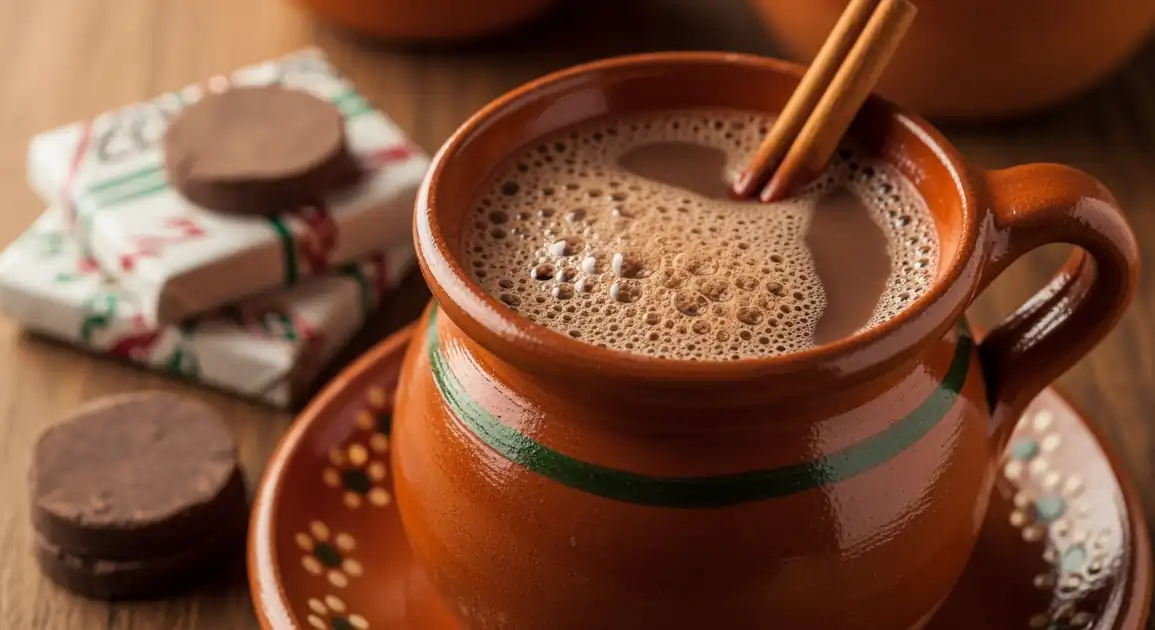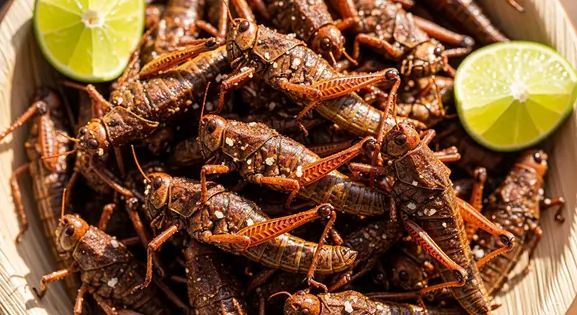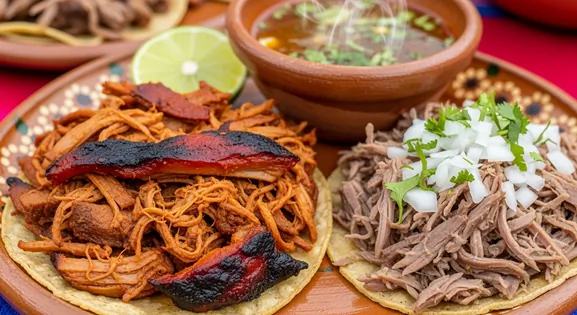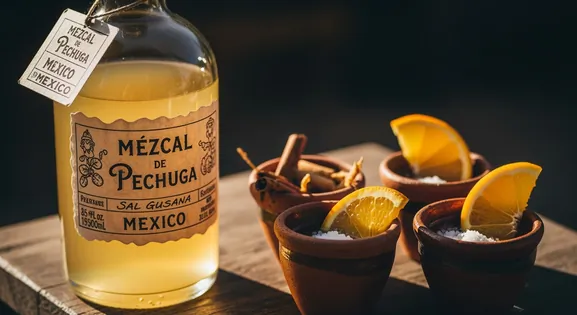Chocolate de Agua in Oaxaca
Chocolate de Agua

The Essential Guide to Chocolate de Agua
Stepping into Oaxaca, the aroma of chocolate is inescapable. More than just a drink, Chocolate de Agua is a daily ritual here, a frothy, comforting embrace of local cacao and tradition. Join the locals and discover this essential Oaxacan experience, perfect for any time of day.
New to Chocolate de Agua? Learn all about its history in our complete guide.
Insider Tips for Chocolate de Agua
For the most authentic experience, seek out dedicated chocolaterías like Mayordomo or La Soledad. They often grind their own cacao and offer a deeper insight into the chocolate-making process.
Don't miss the classic Oaxacan pairing: a warm, frothy cup of Chocolate de Agua with a piece of pan de yema (egg yolk bread). It's perfect for dipping and soaking up the rich flavor.
While chocolaterías are excellent, some of the most vibrant and traditional Chocolate de Agua can be found at market stalls in Mercado 20 de Noviembre or Mercado Benito Juárez. Look for busy vendors.
Exploring Oaxaca for the Best Chocolate de Agua
Historic Center (Centro Histórico)
Numerous cafés and chocolate shops surrounding the Zócalo and surrounding streets, offering a convenient and bustling atmosphere for a traditional Oaxacan chocolate experience.
Zócalo, Mercado Benito Juárez, Mina Street
Morning, Afternoon
20 de Noviembre Market
The vibrant food section of this popular market is home to several bustling vendors specializing in traditional Oaxacan beverages, perfect for an authentic local taste.
Mercado 20 de Noviembre food hall
Morning, Mid-day
Reforma
The charming Reforma neighborhood is known for its quieter, more upscale traditional chocolaterías, offering a relaxed setting to enjoy your chocolate near Parque El Llano.
Parque El Llano
Morning
Jalatlaco
Jalatlaco, a picturesque and historic neighborhood, boasts charming cafés and artisanal shops where you can savor traditional Oaxacan chocolate in a more tranquil, local setting.
Templo de San Matías Jalatlaco
Morning, Afternoon
Vendor Tips
- Look for places grinding their own chocolate or clearly displaying which local producer they source from.
- Some vendors offer tastings of different chocolate tablets before preparing your drink.
- Ask about the 'altura' (elevation) where the cacao was grown - some vendors specifically highlight chocolate from certain regions.
- Many chocolate shops offer both ready-to-drink beverages and chocolate tablets to prepare at home.
Quality Checklist: How to Find the Best
What to Look For
-
Served piping hot, ideally frothed with a 'molinillo' just before serving
Boiling water ensures safety; fresh frothing is key to the authentic Oaxacan experience.
-
Prepared using visible, locally sourced chocolate tablets (often from brands like Mayordomo, La Soledad, Guelaguetza)
Ensures authenticity and quality control.
-
Served in clean clay mugs ('tazas de barro')
Traditional vessel; check for cleanliness.
-
Establishments specializing in chocolate (chocolaterías) or reputable market stalls
More likely to follow proper preparation methods.
What to avoid
-
Lukewarm chocolate
Indicates it wasn't freshly prepared or properly heated, posing a potential safety risk.
-
Chocolate kept in large, stagnant batches for long periods
Risk of bacterial growth, especially if not kept consistently hot.
-
Dirty mugs or preparation areas
Basic hygiene concern.
What You Need to Know
Dietary Information
Important Note for Travelers: Your safety is our priority. Below are the common allergens associated with the traditional preparation of this dish. However, recipes and ingredients can vary significantly between establishments. Always confirm all ingredients directly with the food vendor before ordering, especially if you have a severe allergy.
Potential Allergens
Dietary Suitability
Price Guide
Budget Tips
- Traditional markets like Central de Abastos or 20 de Noviembre offer the best value (25-40 MXN).
- Family-run cafés typically charge mid-range prices (40-60 MXN).
- Tourist-oriented establishments in the historic center charge premium prices (60-90 MXN).
- Many traditional breakfast spots include Chocolate de Agua as part of meal combinations.
Serving & Seasonality
In Oaxaca, traditionally served in locally-made clay mugs that help maintain temperature and are believed to enhance flavor. Often accompanied by pan de yema (egg bread) or other local breads for dipping.Best Times to Enjoy
- Morning: The traditional breakfast time (7 AM - 10 AM) is when locals most commonly enjoy it.
- Afternoon: Sometimes enjoyed as a mid-afternoon pick-me-up (4 PM - 6 PM).
- Evening: During cooler months, enjoyed in the evening (7 PM - 9 PM).
Seasonal Availability
Available year-round with increased consumption during the cooler months (November-February) and festival seasons.
How to Order with Confidence
When ordering Chocolate de Agua in Oaxaca, simply ask for "un chocolate de agua." Specify if you prefer it "sin azúcar" (without sugar) or "con poca azúcar" (with little sugar), as it's often sweetened. Locals typically enjoy it very hot, so be prepared for the temperature. Don't hesitate to ask for "pan de yema" to accompany your drink, as it's the traditional Oaxacan way to savor this beloved beverage.
How Locals Eat It: Variations
Chocolate de Agua Tradicional Oaxaqueño
The most authentic version using stone-ground chocolate with cinnamon and sometimes almonds, meticulously frothed with a molinillo.
Chocolate para Mesa
A slightly thicker version specifically designed for dipping bread, with a higher ratio of chocolate to water.
Chocolate con Nuez
A regional variation that incorporates local nuts beyond just almonds.
Chocolate de Tascalate
Found in some traditional establishments, this reddish variation incorporates achiote (annatto) and sometimes maize, reflecting indigenous traditions.
A Cultural Deep Dive
Local Significance
In Oaxaca, Chocolate de Agua represents both cultural heritage and everyday tradition. The region's reputation for exceptional chocolate makes this drink a source of local pride and identity.
Eating Customs
- In Oaxaca, traditionally enjoyed with pan de yema or other local breads.
- Often the first thing consumed in the morning in traditional households.
- Some locals add a pinch of salt to enhance flavor - an ancient practice.
- Traditional clay cups are preferred as they're believed to impart subtle earthy notes.
Getting the Most Out of Your Meal
Choosing Authentic Chocolate de Agua in Oaxaca
This guide helps you identify and choose authentic Chocolate de Agua in Oaxaca, ensuring you experience the true local flavor and preparation methods.
- Visit dedicated 'chocolaterías' (like Mayordomo) or reputable stalls inside markets (Benito Juárez, 20 de Noviembre).
- Specify 'chocolate de agua' (water-based) to distinguish from 'chocolate de leche' (milk-based).
- Watch for the preparation: ideally made to order, heated in a clay pot ('olla'), and frothed vigorously with a wooden 'molinillo'.
- Accept it served very hot in a traditional clay mug.
- Pair it with 'pan de yema' (egg yolk bread) for the classic Oaxacan breakfast or snack experience.
Navigating Oaxacan Chocolate Shops
Learn how to navigate the traditional chocolate shops in Oaxaca to find the best tablets and prepared drinks for your taste.
- Look for 'molinillos' (wooden whisks) and 'ollas' (clay pots) on display, indicating traditional preparation.
- Don't be afraid to ask for samples of chocolate tablets before buying, as many shops offer them.
- Inquire about the cacao's origin; Oaxacan cacao is highly prized.
- Consider buying chocolate tablets to prepare at home, a popular souvenir.
- Many shops also sell 'pan de yema' or other local breads to pair with your drink.
Our Commitment to Quality
At Tasteplorers, our mission is to provide the most accurate and useful travel information in the world. To achieve this, all content on this site is created through our unique editorial framework. We utilize leading AI research tools, guided by our proprietary prompts, and a multi-stage validation process. This entire system is overseen by our editorial team to ensure everything we publish meets our high standards for accuracy, cultural nuance, and practical value for travelers.
Learn more about our Editorial Process and our Mission.
Explore regions
Europe
Discover Europe's diverse culinary landscape, from Mediterranean flavors to hearty Alpine fare. Learn to navigate markets, decode menus, and eat like a local.
Latin America & Caribbean
Discover the vibrant cuisines of Latin America & the Caribbean. Our expert guide covers everything from Mexican street food to Peruvian ceviche and market tips.
Oceania
Explore Oceania's diverse food scene. Learn about Polynesian earth ovens, Fijian feasts, and the vibrant café culture of Australia and New Zealand.
Southeast Asia
Explore Southeast Asia's diverse food cultures from Thailand to Vietnam. Get expert tips on navigating spice levels, choosing quality vendors, and understanding the rich traditions of the region.



